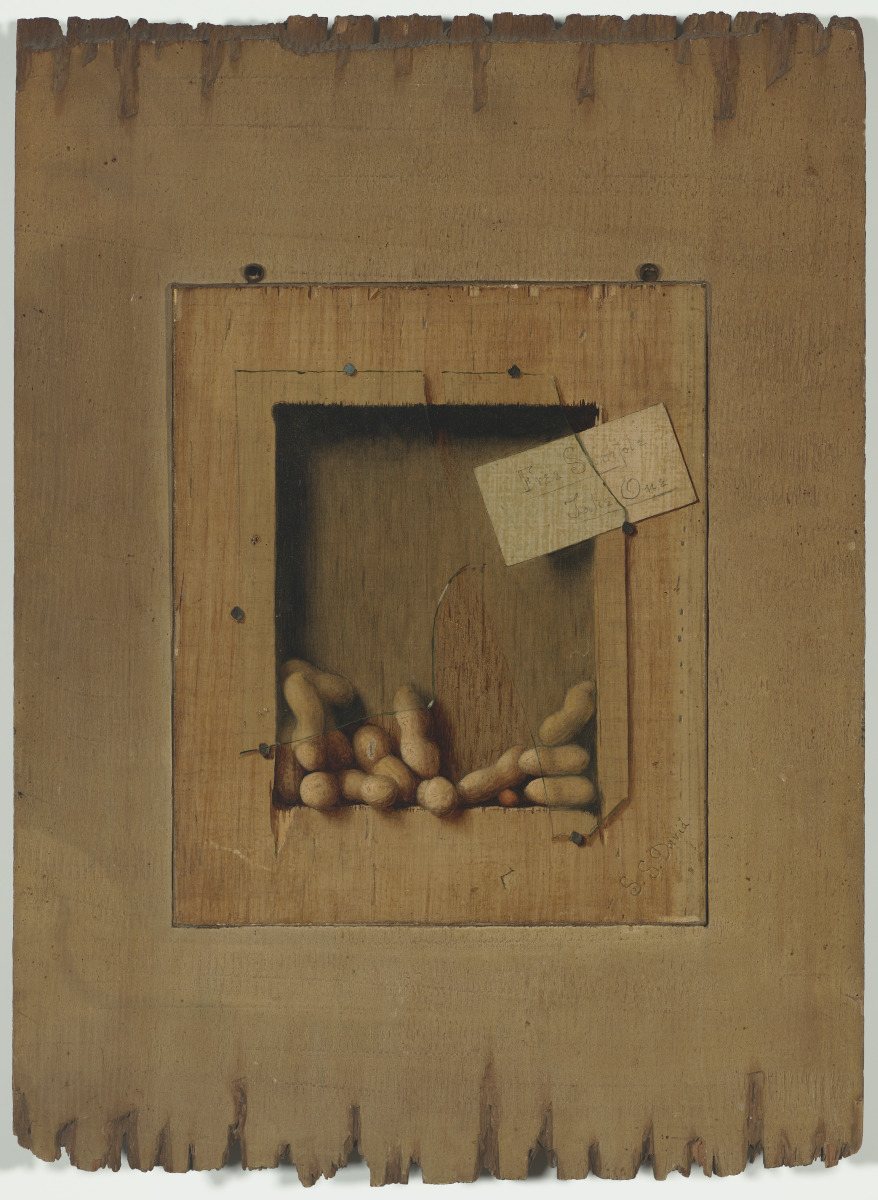
Free Sample, Take One (Primary Title)
De Scott Evans, American, 1847 - 1898 (Artist)
The history of illusionary, highly naturalistic painting in Western art is centuries old, spanning ancient times through the Renaissance to the 17th-century Golden Age of Dutch painting. In the United States, a few artists tried their hand at “deception pieces” in the 1800s, but it was not until the century’s end that trompe-l’oeil (fool-the-eye) imagery emerged as a popular art form.
In this painting, De Scott Evans (also known as S. S. David) pictures a distinctly American subject. Beneath a hand-scrawled card reading “Free Sample, Take One” sits a cache of peanuts—a popular food and one of the nation’s most profitable crops. The tempting pile is so precariously balanced that it seems as if it might tumble down at the least disturbance. An observant taker might also be dissuaded by the jagged edges of the glass barrier.
Evans’s original chip-carved frame, to which the painted canvas is so beautifully matched, is the only known surviving example by the artist.
Some object records are not complete and do not reflect VMFA's full and current knowledge. VMFA makes routine updates as records are reviewed and enhanced.

